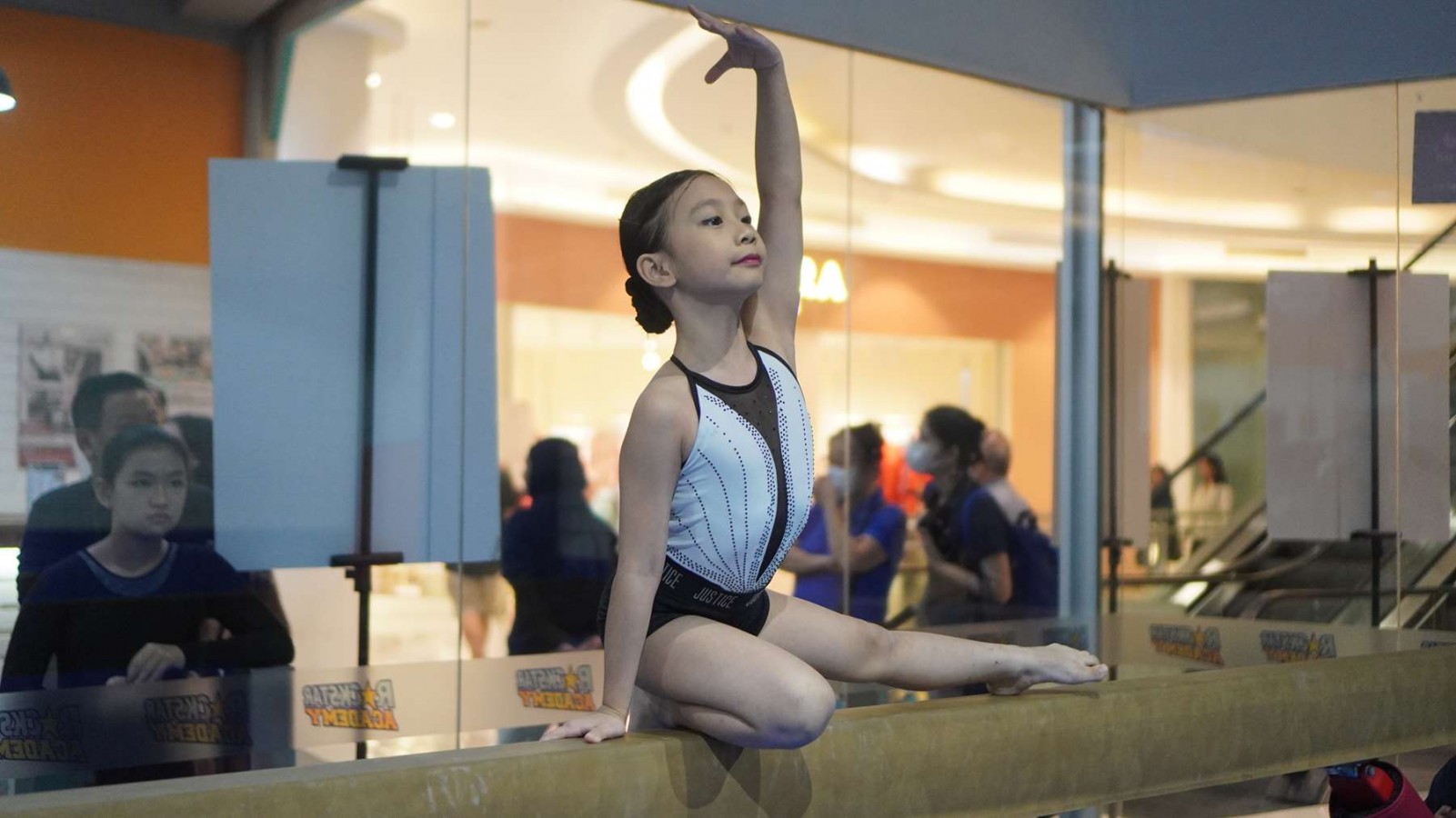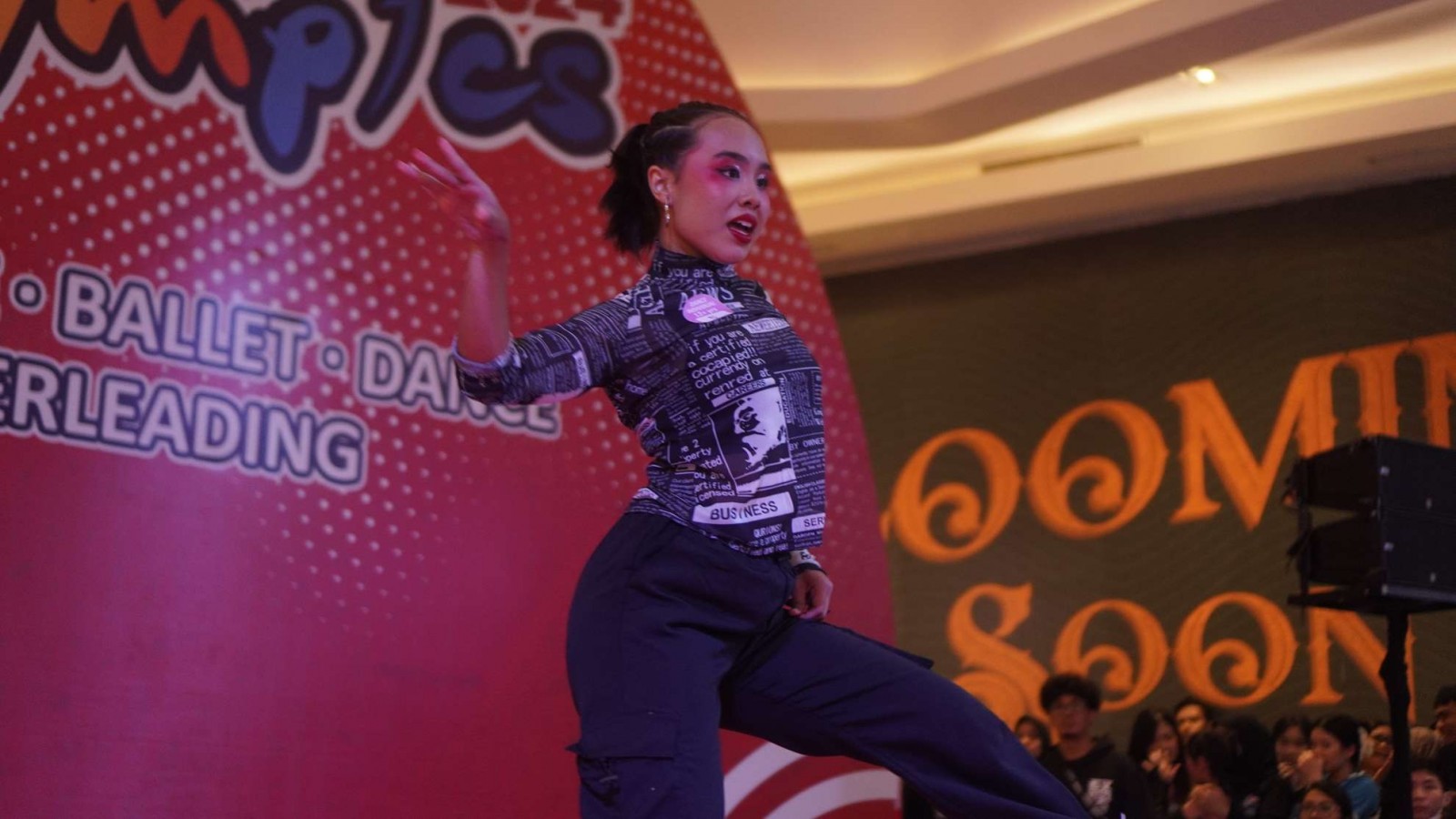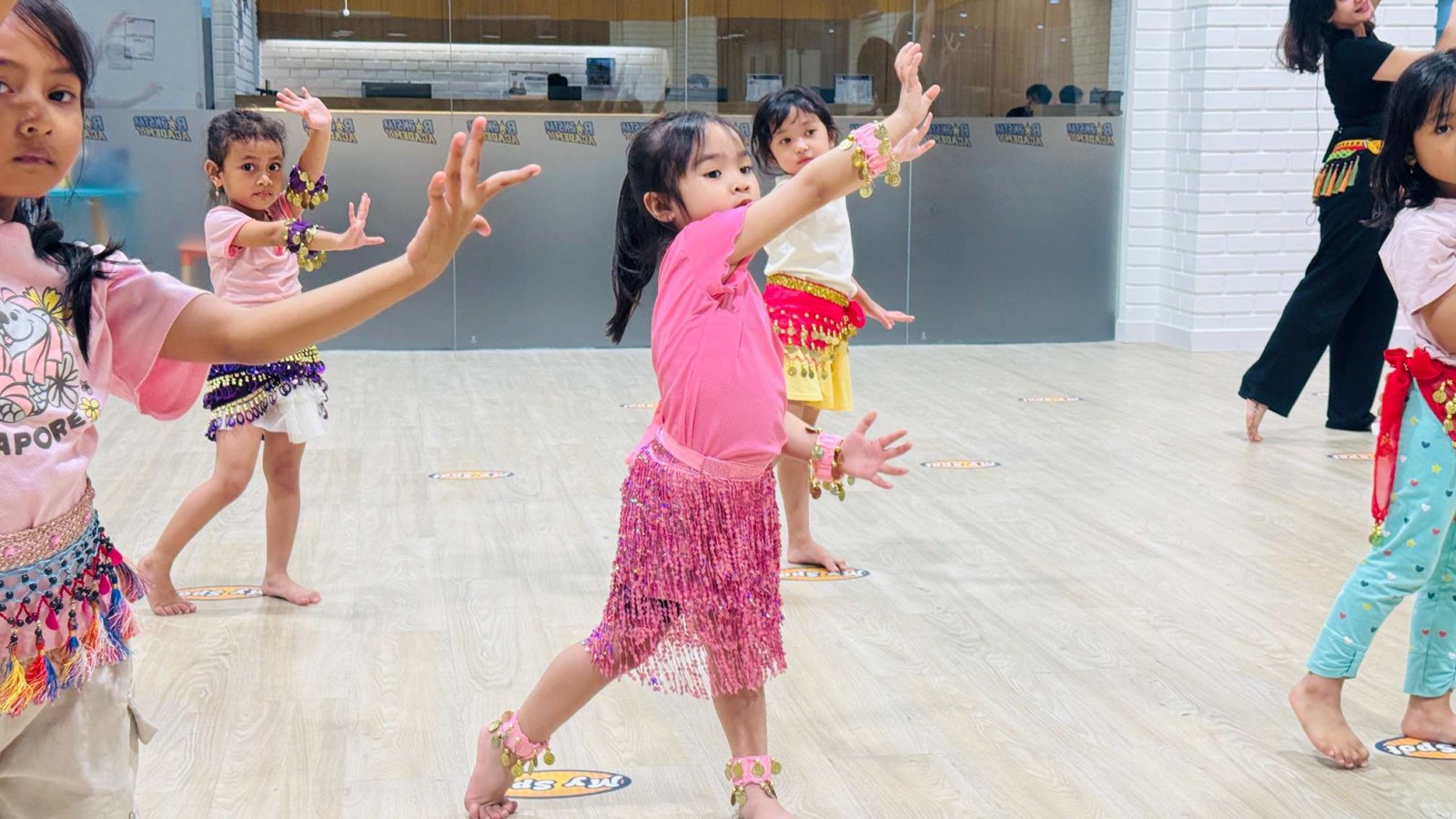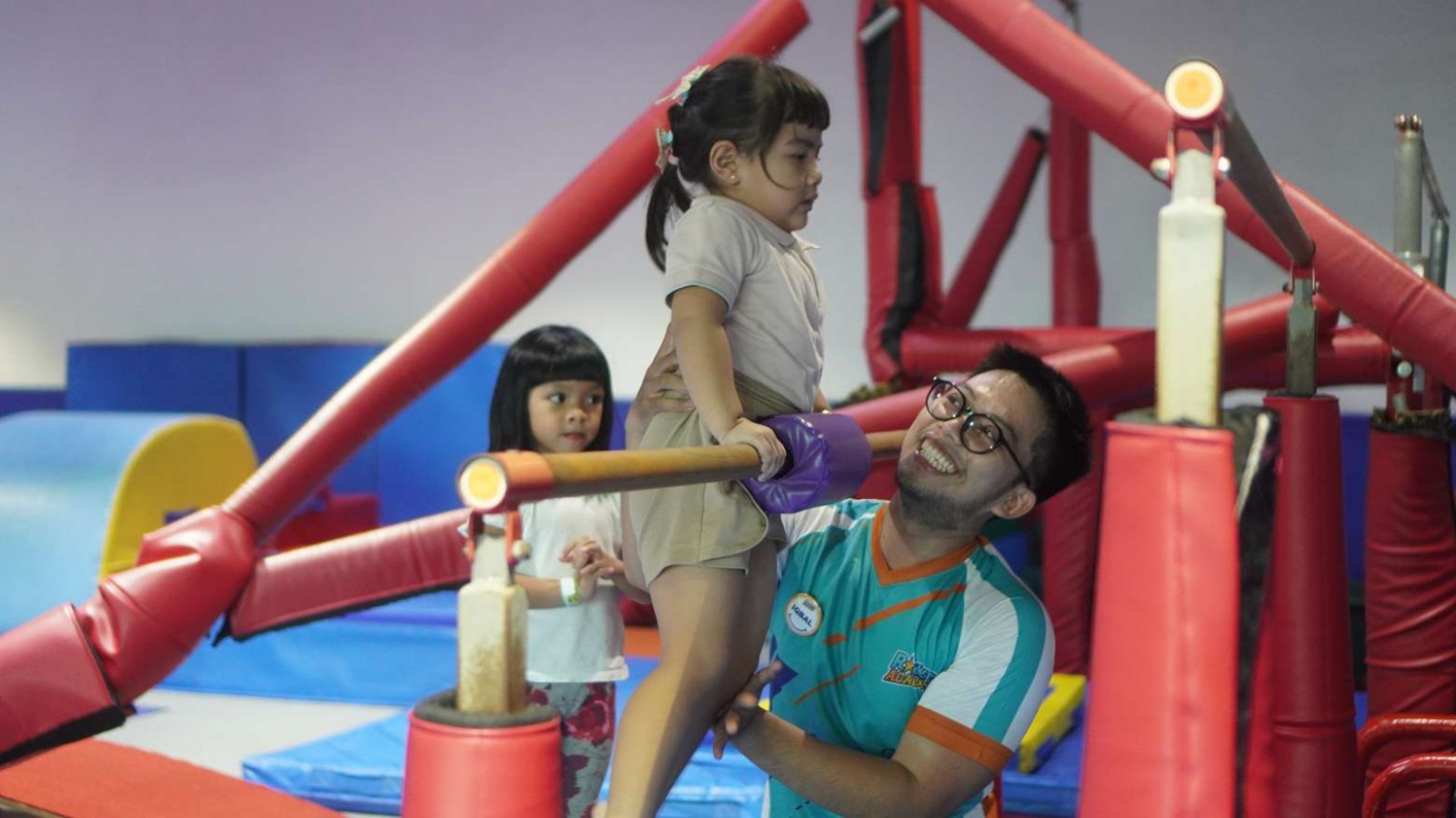Everything You Need To Know About Balance Beam in Gymnastics

Gymnastics, with its grace, athleticism, and precision, showcases some of the most mesmerizing athletic feats in the world. Among its apparatuses, the balance beam stands out as one of the most iconic and challenging elements of gymnastics routines.
Mastering the balance beam requires not only physical strength and flexibility but also mental focus and composure. In this comprehensive guide, we'll delve into the world of balance beam in gymnastics, exploring its anatomy, skills, judging criteria and its routines.
What is Balance Beam in Gymnastics?
The balance beam is a narrow and elevated platform used in artistic gymnastics routines. It is 4 inches wide and stands 4 feet off the ground, with a length of 16 feet. The beam is usually made of wood or composite materials, providing a sturdy yet slightly flexible surface for gymnasts to perform on. Its narrowness demands precise balance and control, making it one of the most challenging apparatuses in gymnastics.
The balance beam is mounted on a metal frame, ensuring stability and safety during routines. Its surface is often covered with a suede-like material to provide grip while minimizing slippage.
How the Gymnastic Balance Beam Is Judged
In gymnastics, the balance beam is judged based on several key criteria to evaluate the gymnast's performance accurately. Judges assess the execution, difficulty, artistry, and composition of the routine to determine the final score. Here's a breakdown of how the gymnastic balance beam is judged:
A. Execution
Execution refers to the precision, form, and technique with which the gymnast performs each skill and element on the balance beam. Judges closely observe the gymnast's body alignment, control, and fluidity throughout the routine.
Deductions are made for wobbles, balance checks, form breaks, steps, and falls. The goal is to execute each element with impeccable precision and grace.
B. Difficulty
Difficulty reflects the complexity and risk of the skills and combinations performed by the gymnast. The routine's difficulty level is determined by the variety and intricacy of the elements included.
Gymnasts are rewarded for executing more challenging skills, such as intricate acrobatic series, difficult leaps, and complex dance elements. Difficulty also accounts for the connection of skills and transitions between elements.
C. Artistry
Artistry encompasses the gymnast's expression, presentation, and creativity throughout the routine. Judges evaluate the gymnast's performance quality, musicality, and emotional engagement with the audience.
Artistic elements include dance movements, expression of personality, and choreographic interpretation of the music. Graceful movements, fluid transitions, and expressive performance enhance the overall artistry of the routine.
D. Composition
Composition refers to the structure, variety, and flow of the routine. Judges assess how well the gymnast integrates different skills, elements, and transitions into a cohesive and balanced performance.
A well-composed routine demonstrates diversity, creativity, and continuity in its elements and sequences. Gymnasts aim to create a dynamic and engaging routine that showcases their strengths while maintaining a smooth and seamless flow from start to finish.
Basic Balance Beam Skill Types
Balance beam routines in gymnastics incorporate a wide range of skill types, each requiring precision, strength, flexibility, and balance. These skills are carefully choreographed into routines to showcase the gymnast's abilities and athleticism. Here's an overview of the various types of skills commonly performed on the balance beam:
1. Acrobatic Skills
Acrobatic skills involve flips, twists, and somersaults performed on the balance beam. These skills demonstrate the gymnast's agility, power, and control. Common acrobatic skills include:
- Back Handspring: A dynamic skill where the gymnast pushes off the beam with their hands, propelling themselves into a backward somersault.
- Back Tuck: A backward somersault performed without handspringing off the beam.
- Aerial: A cartwheel performed without hands touching the beam, where the gymnast rotates sideways in the air.
- Layout: A straight-bodied backflip where the gymnast maintains a stretched position throughout the skill.
2. Dance Skills
Dance skills add grace, fluidity, and expression to balance beam routines. These skills often involve jumps, leaps, turns, and choreographed sequences that showcase the gymnast's flexibility and artistry. Common dance skills include:
- Split Leap: A leap where the gymnast jumps into the air, extending one leg forward and the other leg backward in a split position.
- Full Turn: A turn performed on one foot, where the gymnast rotates 360 degrees while maintaining balance on the beam.
- Wolf Turn: A spinning movement that requires a gymnast to balance on one leg in a crouched position while executing multiple turns.
- Switch Leap: A leap where the gymnast jumps into the air, switching legs mid-air to land in a split position on the opposite leg.
- Ring Leap: A leap where the gymnast extends one leg forward and the other leg backward while arching the body into a ring shape.
3. Mounts and Dismounts
Mounts and dismounts are essential components of balance beam routines, marking the beginning and end of the performance. Mounts involve various techniques to enter onto the beam, while dismounts feature skillful maneuvers to exit the beam. Common mounts and dismounts include:
- Handstand Mount: A mount where the gymnast kicks up into a handstand position before lowering into a standing position on the beam.
- Round-off Dismount: A dismount where the gymnast performs a round-off (a cartwheel with a 180-degree turn) before dismounting with a backward somersault.
- Double Backflip Dismount: A high-difficulty dismount where the gymnast performs two backward somersaults in a stretched position before landing on the mat.
4. Connections and Combinations
Gymnasts aim to connect skills and elements seamlessly throughout their routines to maximize scoring potential and fluidity. Connections involve linking two or more skills together without interruption, while combinations incorporate a series of skills performed in rapid succession.
Examples include back handspring-back handspring combinations and dance elements linked with acrobatic skills.
5. Balance and Control
Fundamental to all balance beam skills is the ability to maintain balance and control on the narrow beam. Gymnasts must demonstrate poise, stability, and confidence throughout their routines, minimizing wobbles, balance checks, and corrections to maximize their score.
Creating the Ideal Balance Beam Routine
In a balance beam routine, gymnasts must utilize the full length of the beam, which measures 16 ½ feet. The duration of a routine typically spans up to 90 seconds, with deductions incurred for exceeding the time limit.
The primary objective for gymnasts performing on the beam is to execute skills that garner the highest possible score from judges. Throughout this process, they must execute these skills with the same level of elegance as they would on the floor.
At the outset of the competition, gymnasts mount the beam, concluding their routine with a dismount. The pivotal moment for a gymnast during the dismount is to stick the landing. Achieving this entails landing with feet together and refraining from moving the feet before acknowledging the judges with a salute.
Conclusion
In conclusion, the balance beam is a challenging yet captivating apparatus in gymnastics, requiring precision, skill, and artistry from gymnasts. Mastering the balance beam demands years of training, dedication, and mental focus.
With its narrow surface and demanding requirements, the balance beam exemplifies the essence of artistic gymnastics, captivating audiences with its beauty and athleticism. Do your children have any interest in gymnastics?
In nurturing your child's interest in gymnastics, enrolling them in a structured program can significantly enhance their skills and passion for the sport. Rockstar Academy stands out as an exemplary Sports & Performing Arts Academy offering the widest range of physical activity programs, including gymnastics.
With a dedicated curriculum, Rockstar Academy facilitates Gymnastics Testing, allowing students to progress to higher levels and prepare for National & International competitions. Their Gymnastics Elite Championships promote excellence, discipline, and good sportsmanship, fostering a well-rounded approach to competition.
Additionally, Rockstar Academy offers a free trial class, providing an opportunity for interested individuals to experience their exceptional programs firsthand. If you're considering gymnastics for your child, don't hesitate to reach out to Rockstar Academy to embark on an enriching journey of physical and personal growth.
FAQ
How wide is the balance beam?
The balance beam is 4 inches wide, providing a narrow surface for gymnasts to perform on.
What material is the balance beam made of?
Balance beams are typically made of wood or composite materials, with a suede-like covering for grip and traction.
How is the balance beam judged?
Balance beam routines are judged based on execution, difficulty, artistry, and composition. Judges deduct points for errors and imperfections while rewarding gymnasts for skill complexity and artistic expression.
What skills are performed on the balance beam?
Gymnasts perform a variety of skills on the balance beam, including acrobatic elements like flips and twists, dance elements such as leaps and turns, and dynamic mounts and dismounts.
How long is a balance beam routine?
A balance beam routine typically lasts between 60 to 90 seconds, during which gymnasts aim to showcase their skills, strength, and artistry.



